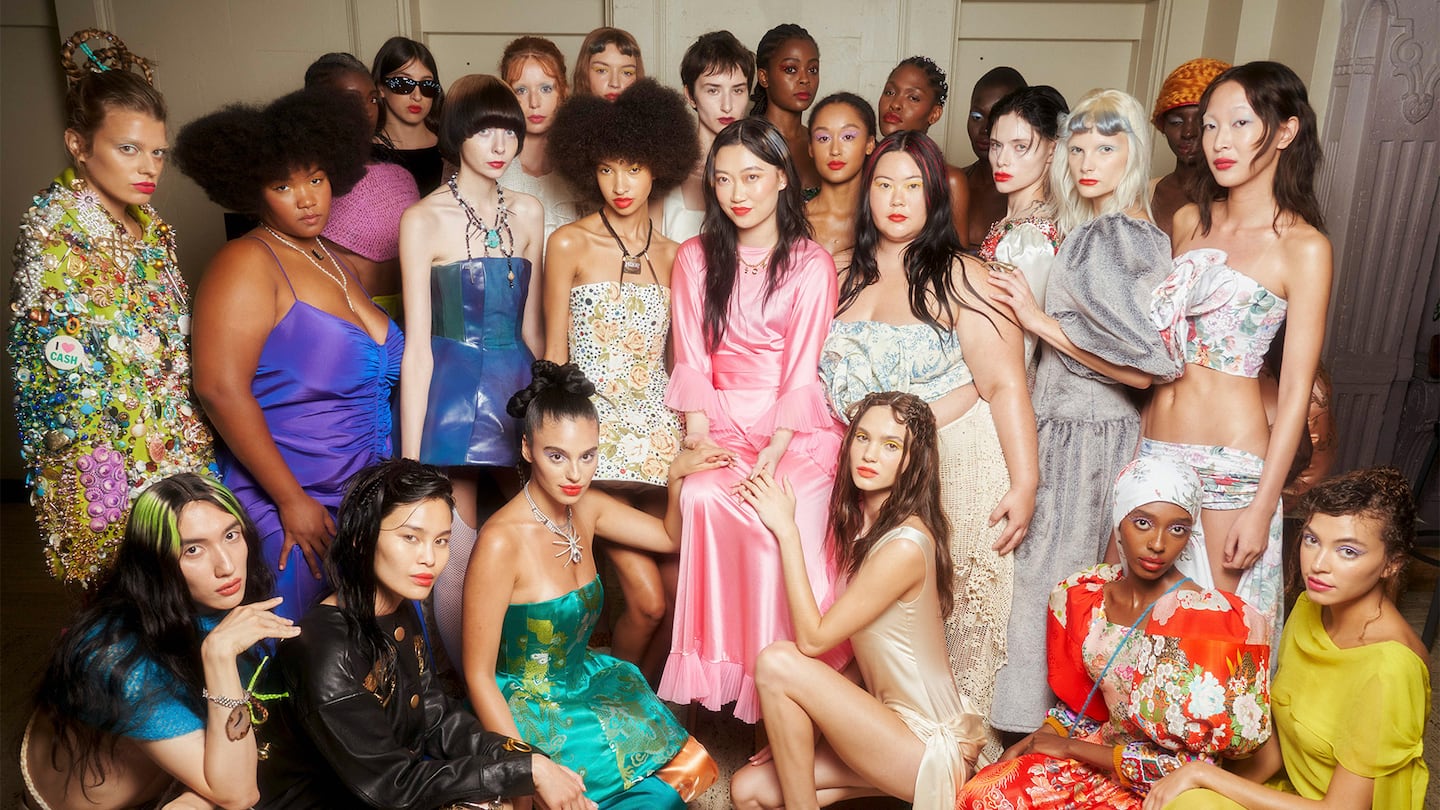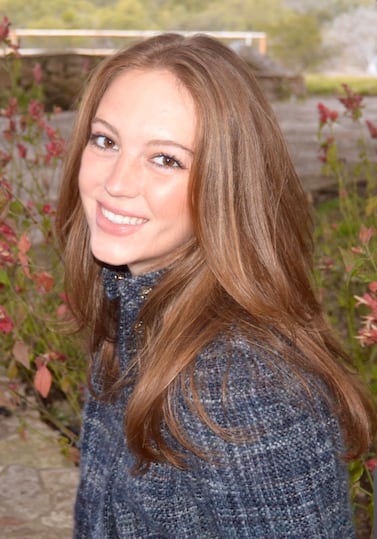
The Business of Fashion
Agenda-setting intelligence, analysis and advice for the global fashion community.

Agenda-setting intelligence, analysis and advice for the global fashion community.

For the past two seasons, Bach Mai, a New York-based evening wear designer, hosted presentations during New York Fashion Week. But after his father passed away this summer, he decided to put on a runway show in his honour, though the cost was higher and logistics more challenging than his previous presentations.
“I felt like I had to do this… your first runway is almost like graduating to another level,” said Mai.
For many emerging designers, a runway show represents a major milestone for both their businesses and their careers; an opportunity to establish their point-of-view on a larger stage and earn a certain level of prestige in the industry. But getting there takes an enormous investment. Even a basic show in New York can run from $100,000 to $300,000, while at the highest end, shows can cost millions. Plus, return on investment is hard to measure.
“It’s one of the hardest budgets to plan and to make ends meet on. There’s no payback, it’s all intangibles,” said Gary Wassner, founder and chief executive of consultancy Hilldun Corporation.
ADVERTISEMENT
Still, there’s just something about a runway show many brands can’t resist. To make it work, up-and-coming brands cobble together funds from a slew of sources, including savings, grants and sponsorships. Often, they get crafty by finding discounted venues or trading exposure for services like hair and makeup. But, relying too heavily on sponsors and partners can be risky: if they go missing, it throws designers’ fashion week plans into flux.
The logistics of putting on a show can be a stressor on an emerging brand’s not-yet-mature business; but, for many, the cost — both financial and emotional — is worth it.
“It is such an investment for us. Two shows a year shakes the whole company,” said Alejandro Gómez Palomo, founder and creative director of genderless fashion brand Palomo Spain. “But, of course, the shows build your reputation and keep the brand going.”
Regardless of location and end cost, funding shows are top of mind for designers throughout the year, and nailing down a budget is an ever-evolving conversation between public relations firms, designers and producers.
“The second we finish a show, we’re like, ‘Okay, great, how are we going to pay for the next one?’” said Olivia Cheng, founder of New York-based womenswear brand Dauphinette.
Gia Kuan, publicist and founder of her eponymous New York-based consultancy, which works with brands including Telfar, Bad Binch Tongtong and Priscavera, starts by determining the “true budget” based on what a brand has on hand; then she adds in committed sponsors, who the brand is sure will come through.
From there begins a series of negotiations and tradeoffs: For example, a bigger show may build more buzz, but it also means renting more benches and hiring security, said Kuan.
For the smallest labels, it’s sponsorships that make shows possible. Often, they come from larger fashion companies; beauty, wellness or beverage brands; and increasingly, technology or payment platforms. This season, Topo Chico and jewellery brand Revza sponsored Bach Mai, while tech accessories company Bandolier, beverage brand Lillet and hair care brand Oribe provided support for Dauphinette. The benefit for the sponsors, ideally, is tapping a new audience and getting a cool glow from being on the invite, or even being worn down the runway — Christian Siriano, for example, had Bombay Sapphire as a sponsor this season, and the designer included a look inspired by the gin brand in its collection.
ADVERTISEMENT
“Sure, if [the models] need to be holding weed in a pocket once, we have to do that. Every $5,000 helps… You can make anything look chic,” said Hillary Taymour, the designer behind New York-based Collina Strada, whose Autumn/Winter 2023 show was sponsored in part by cannabis museum THCNYC.
Depending on the brand, timing and the economy, finding funding can be tricky. Taymour has secured money anywhere from a year to the day before a show.
“Sponsorship can make it or break it… it’s always a chicken and the egg. For [sponsors], it’s ‘what press are you getting?’ But [for brands] it’s ‘I can’t really get press if I’m not showing,’” said Erin Hawker, founder of Agentry PR, which started New York Men’s Day, a mostly-funded group show, after having trouble securing individual partnerships for its menswear clients. In a more strained economy, she added, many potential partners don’t have monster marketing budgets to work with.
It’s also important not to count on sponsored cash before they sign on the dotted line.
“Let’s not work with the imaginary ‘what if’ money,” Kuan said. “Sometimes sponsors pull out, sometimes conversations go on forever, and nothing happens.”
Even with preparation, things can go awry. Gypsy Sport, co-winner of CFDA/Vogue Fashion Fund’s top prize in 2015, had three sponsors pull out a week before its 10-year anniversary show on Monday, not only leaving the brand to dash for other funding last-minute but also potentially setting it back on profit targets for the year. Proceeds from Gypsy Sport’s 14-piece Urban Outfitters collaboration in January, funded most of the show, which cost around $100,000. The company said its on pace to end 2023 with $300,000 in sales.
There are also schemes in place to help make shows possible for designers with smaller budgets. The CFDA/Vogue Fashion Fund award provides up to $300,000 in funding to category winners each year; while IMG partnered with Empire State Development to give some smaller designers $50,000 to offset production costs in 2022, and works with partners — this year, UPS — to provide opportunities through its NYFW: The Shows.
Particularly in Europe, designers can rely on more regular funding from governments and governing bodies. This year, the La Fédération de la Haute Couture et de la Mode will provide €15,000 ($16,000) to some designers staging runway shows, while London Fashion Week just received £2 million ($2.5 million) in funding from the UK government.
ADVERTISEMENT
This year, the British Fashion Council’s New Gen programme, a 30-year-old support scheme for young designers, is covering venue and security costs for Chet Lo, founder of his namesake London-based knitwear brand. With help from the programme, Chet Lo is able to fund most of his show. For other touches, he works with partners including make-up artists.
“They have a bit more freedom than when a big brand hires them and is like, ‘we want this exact look,’” said Lo. “For us, they’ll waive their fee and have a better, collaborative experience and put out work they enjoy.”
The real price of a show is tricky to determine.
“It’s lights and sound, but really it’s about the clothes. That’s our biggest expense, and breaking that down is complicated,” said Mai. To transition from a presentation to a catwalk, Mai had to make even more clothes.
It can also feel like the cost of a show is never just one show, said Cheng: To get real traction within the fashion system, most designers have to be consistent — especially at the beginning of their careers.
“Buyers and editors will say, ‘I’m watching your brand,’ and they’ll watch it season after season. So if you can’t deliver season after season, it feels like a sunk cost,” said Cheng.
But staging a show isn’t worth it if you haven’t built awareness, said Robert Rodriguez, a longtime designer for Halston who launched the evening wear line Koltson this year. He plans to develop relationships with his customers directly through trunk shows and retailer Neiman Marcus before showing.
“[Showing at New York Fashion Week] doesn’t matter to me, But I think it matters to our fans and customers,” said Rio Uribe, Gypsy Sport’s founder and creative director. Still, he remains undecided on whether or not it’s worth the effort. “I don’t know if we’ll do this ever again,” he admitted.
Additional reporting by Malique Morris.
From Collina Strada’s neo-Victorianism to Khaite’s icy elegance, Lynn Yaeger reports from the New York shows.
On the first two days of New York Fashion Week, designers Peter Do and Stuart Vevers showcased their takes on storied brands.
‘I think New York is hungry for the level of quality we offer,’ says designer Paul Helbers ahead of Fforme’s runway debut on Sunday.

Joan Kennedy is Editorial Associate at The Business of Fashion. She is based in New York and covers beauty and marketing.
From where aspirational customers are spending to Kering’s challenges and Richemont’s fashion revival, BoF’s editor-in-chief shares key takeaways from conversations with industry insiders in London, Milan and Paris.
BoF editor-at-large Tim Blanks and Imran Amed, BoF founder and editor-in-chief, look back at the key moments of fashion month, from Seán McGirr’s debut at Alexander McQueen to Chemena Kamali’s first collection for Chloé.
Anthony Vaccarello staged a surprise show to launch a collection of gorgeously languid men’s tailoring, writes Tim Blanks.
BoF’s editors pick the best shows of the Autumn/Winter 2024 season.